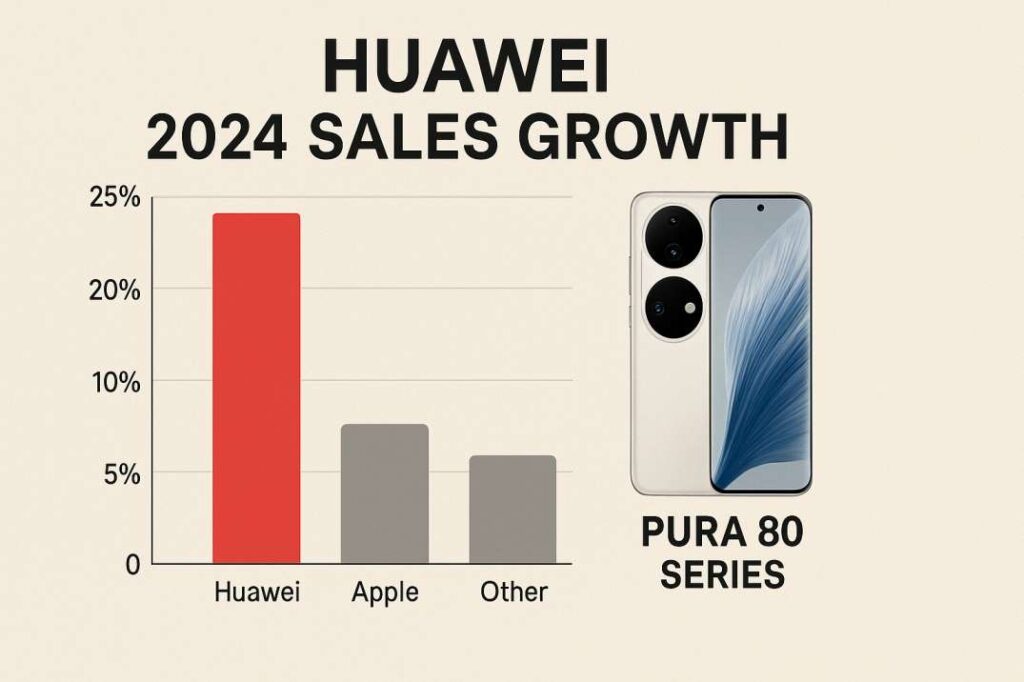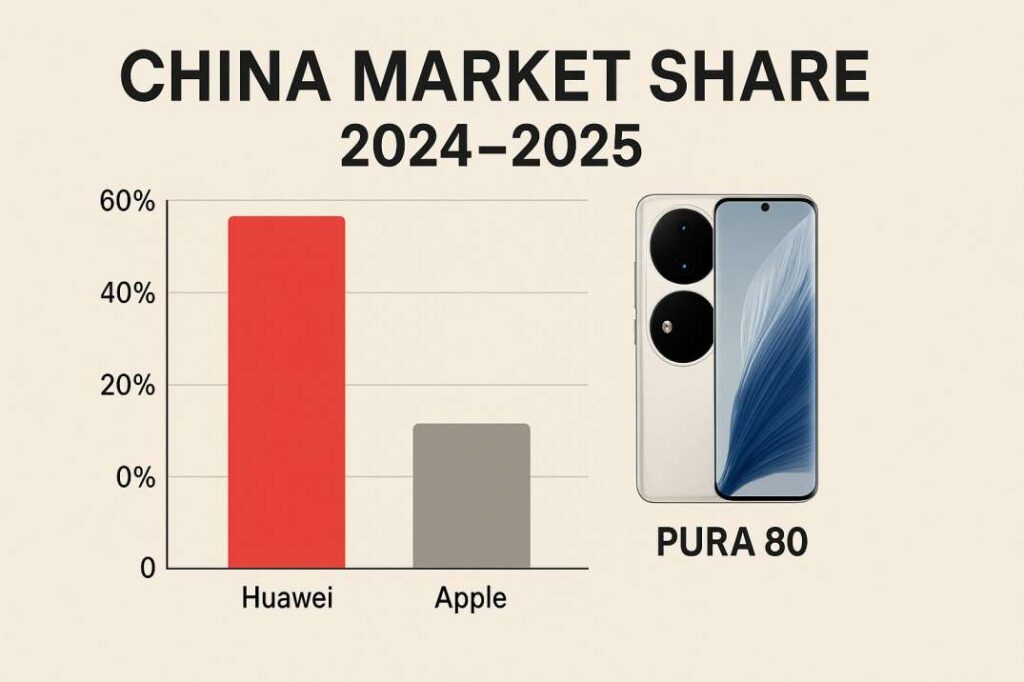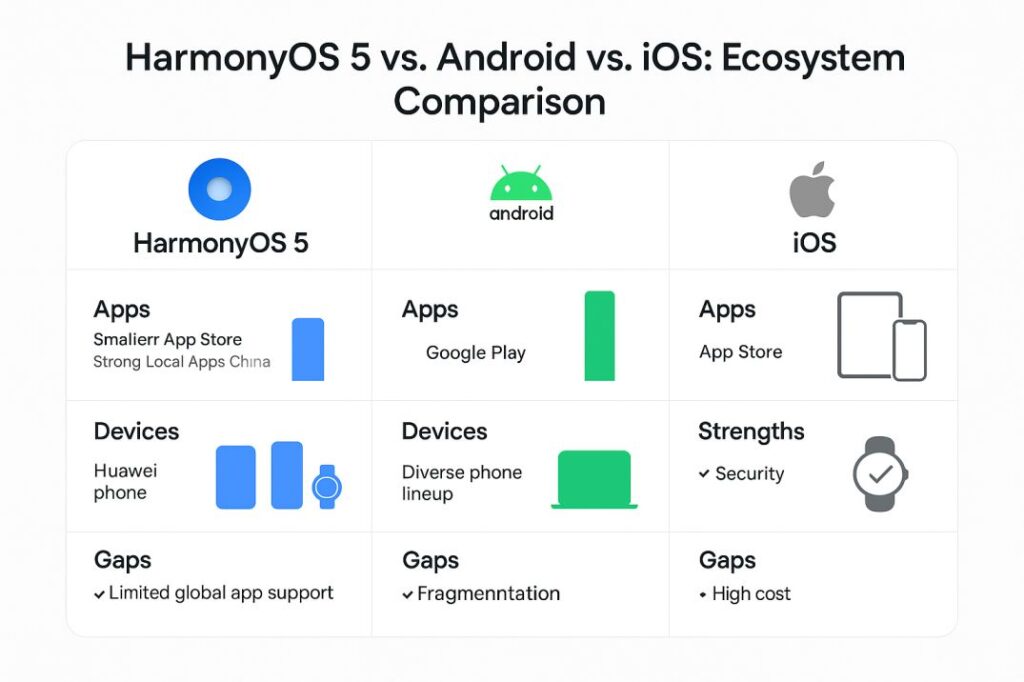Introduction
This Chinese tech giant is staging a remarkable comeback with its Pura 80 series, launched in June 2025. The Huawei Pura 80 series, comprising four models—Pura 80, Pura 80 Pro, Pura 80 Pro+, and Pura 80 Ultra—targets China’s premium smartphone market with cutting-edge features like AI-powered cameras and HarmonyOS 5. This article explores why the Pura 80 series matters, its top features, key considerations, and whether it’s the right choice for you.

Why the Huawei Pura 80 Series Matters
Huawei’s Pura 80 series is more than just a smartphone launch; it’s a symbol of resilience. Here’s why it stands out:
- Defying U.S. Sanctions: Despite restrictions limiting access to U.S. tech, Huawei’s Kirin 9020 chip, likely made by SMIC, powers the Pura 80 series, showcasing innovation under pressure.
- Premium Market Push: With prices from 6,499 yuan ($905) to 9,999 yuan ($1,391), Huawei challenges Apple’s dominance in China, where patriotic sentiment boosts its appeal.
- Photography Revolution: The Pura 80’s XMAGE cameras with AI and dual periscope lenses redefine mobile imaging, perfect for enthusiasts.

Top Features of the Huawei Pura 80 Series
Pura 80 Ultra’s Camera System
- Key Feature 1: 50MP 1-inch LOFIC CMOS sensor with RYYB pixel arrangement excels in low-light photography, capturing vivid details.
- Key Feature 2: Dual periscope telephoto lenses offer unmatched zoom compared to Apple’s iPhone 16 Pro, ideal for distant shots.
- Pro Tip: Use the AI-powered object recognition for travel photography—it identifies landmarks and provides instant info.

HarmonyOS 5 Integration
- Key Feature 1: Pre-installed HarmonyOS 5 ensures fluidity and security, making it Huawei’s first flagship lineup with this OS.
- Key Feature 2: Unlike Android, HarmonyOS 5’s ecosystem integrates seamlessly with Huawei devices, outperforming Google’s ecosystem in China.
- Pro Tip: Customize the interface for faster app access to fully leverage HarmonyOS 5’s smooth performance.
Kirin 9020 Processor
- Key Feature 1: The Kirin 9020 chip delivers high performance for gaming and multitasking, rivaling Qualcomm’s Snapdragon 8 Gen 4.
- Key Feature 2: Compared to the Kirin 9010 in older models, the 9020 offers better energy efficiency, extending battery life.
- Pro Tip: Optimize power settings to maximize the chip’s efficiency during heavy tasks like video editing.
Sleek Design and Build
- Key Feature 1: The Pura 80 series’ sleek design earned praise on Weibo for its premium feel, though some criticized pricing.
- Key Feature 2: Compared to Samsung’s Galaxy S25, the Pura 80 Ultra’s Maple Original Colour Imaging enhances visual fidelity.
- Pro Tip: Choose the Pura 80 Pro+ for a balance of design and cost if the Ultra’s price feels steep.
Key Considerations Before Buying
Pricing and Value
- Concern: The Pura 80 Ultra’s 9,999 yuan ($1,391) price tag drew mixed reactions on Weibo, with some calling it overpriced.
- Insight: Compared to Apple’s iPhone 16 Pro Max (starting at ~$1,200), the Ultra offers superior camera tech but lacks global app support.
- Pro Tip: Wait for the base Pura 80’s July 2025 launch if you want a budget-friendly option.
Software Ecosystem
- Concern: HarmonyOS 5 doesn’t support Google Play, limiting access to apps like YouTube outside China.
- Insight: In China, HarmonyOS 5’s app store is robust, but international users may need workarounds.
- Pro Tip: Research app availability in your region before purchasing.

The Huawei Pura 80 Ultra is the best overall option for photography enthusiasts and Huawei loyalists, thanks to its unmatched camera system and Kirin 9020 performance. For budget-conscious buyers, the Pura 80 Pro (6,499 yuan) offers excellent value with similar features. If you’re outside China, consider the software limitations carefully.
Conclusion
The Huawei Pura 80 series marks a bold step in Huawei’s comeback, blending innovation with patriotic appeal to challenge Apple in China. Whether you’re drawn to its AI cameras or HarmonyOS 5, it’s a flagship worth considering. Which Pura 80 model fits your needs? Share in the comments below! Discover more in our Tech Trends 2025 Guide.

